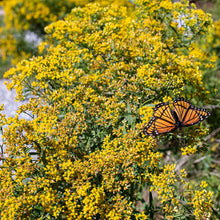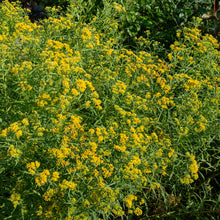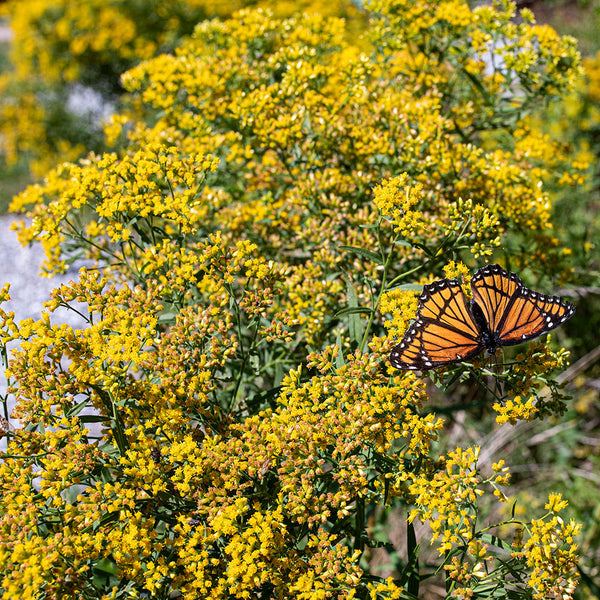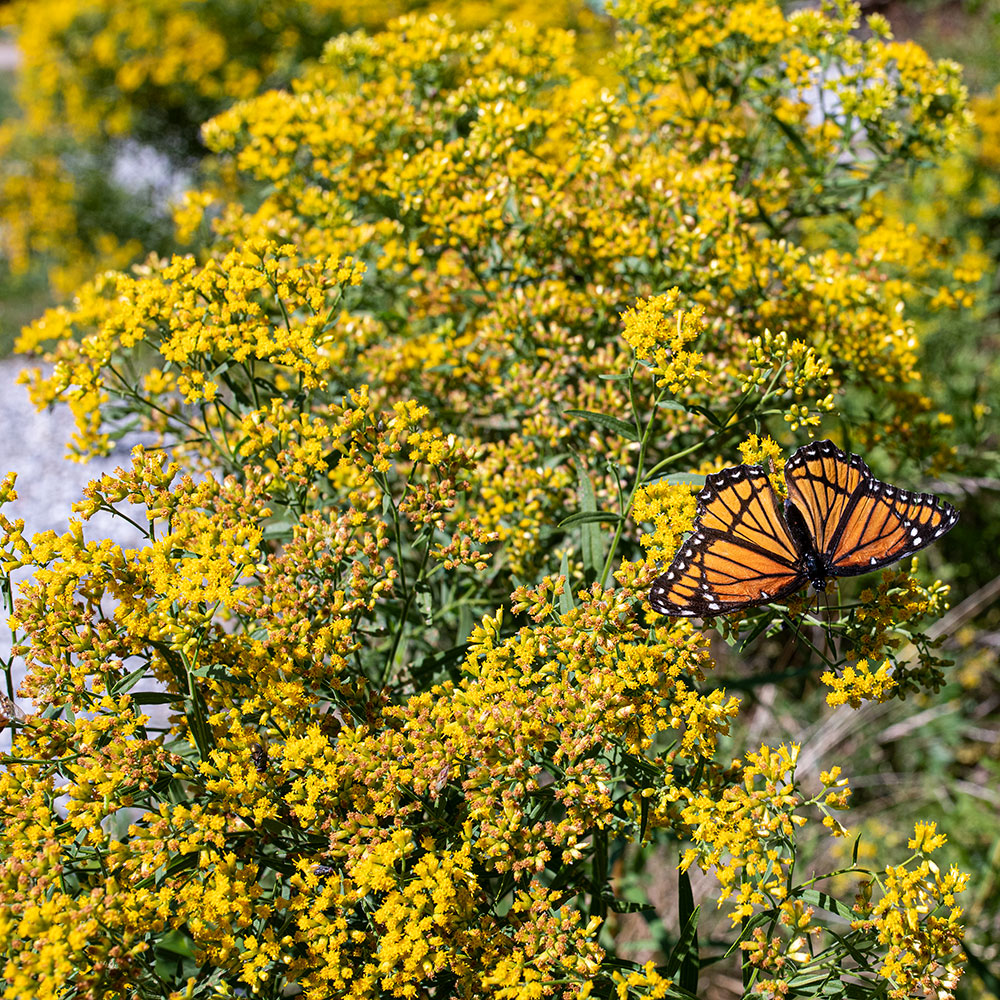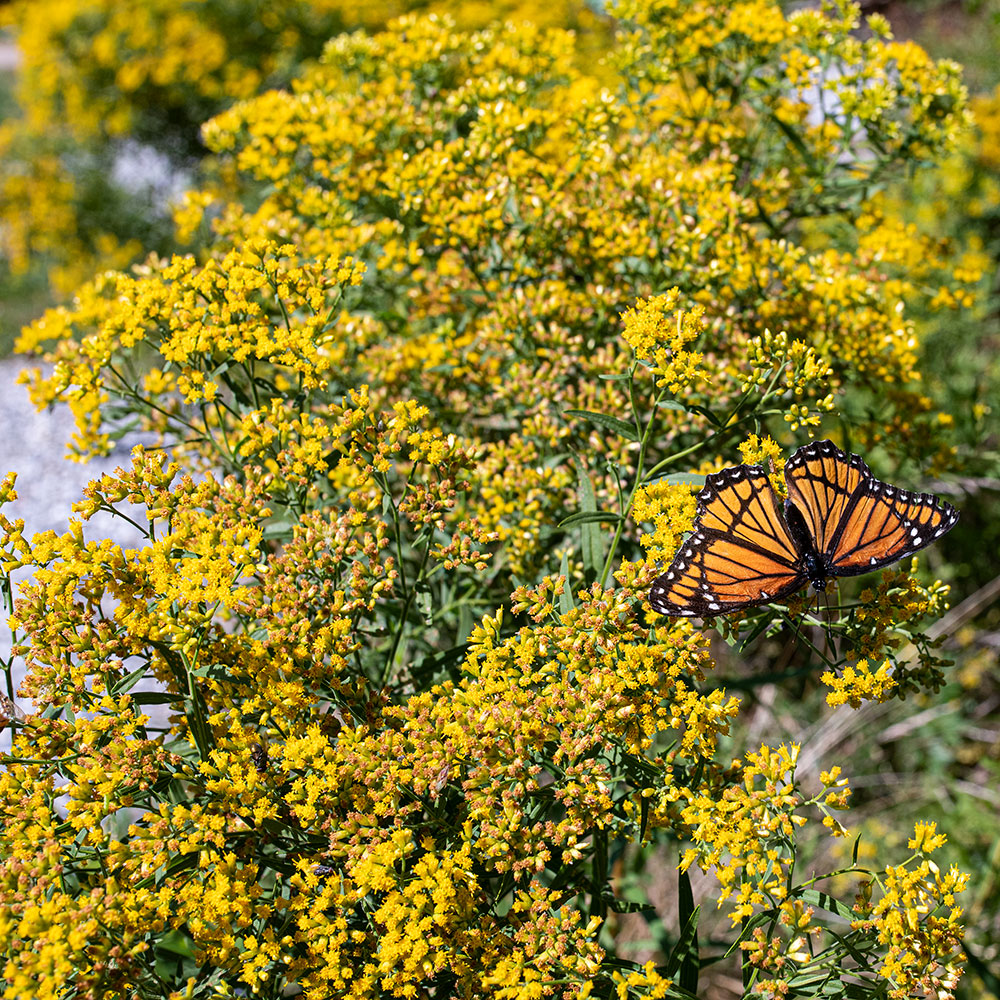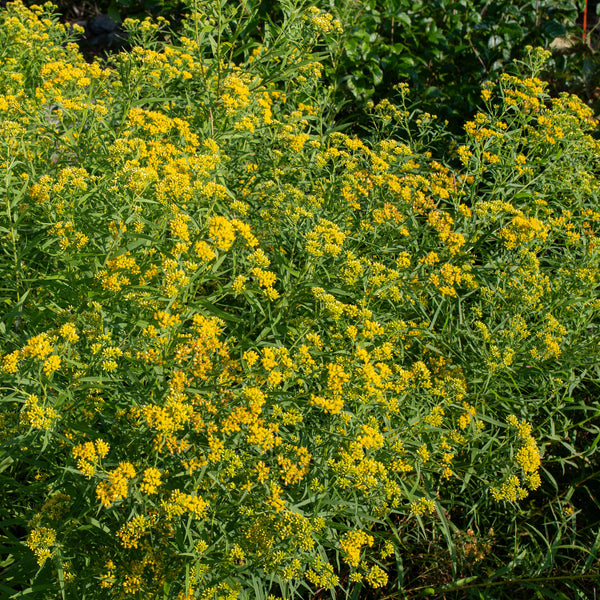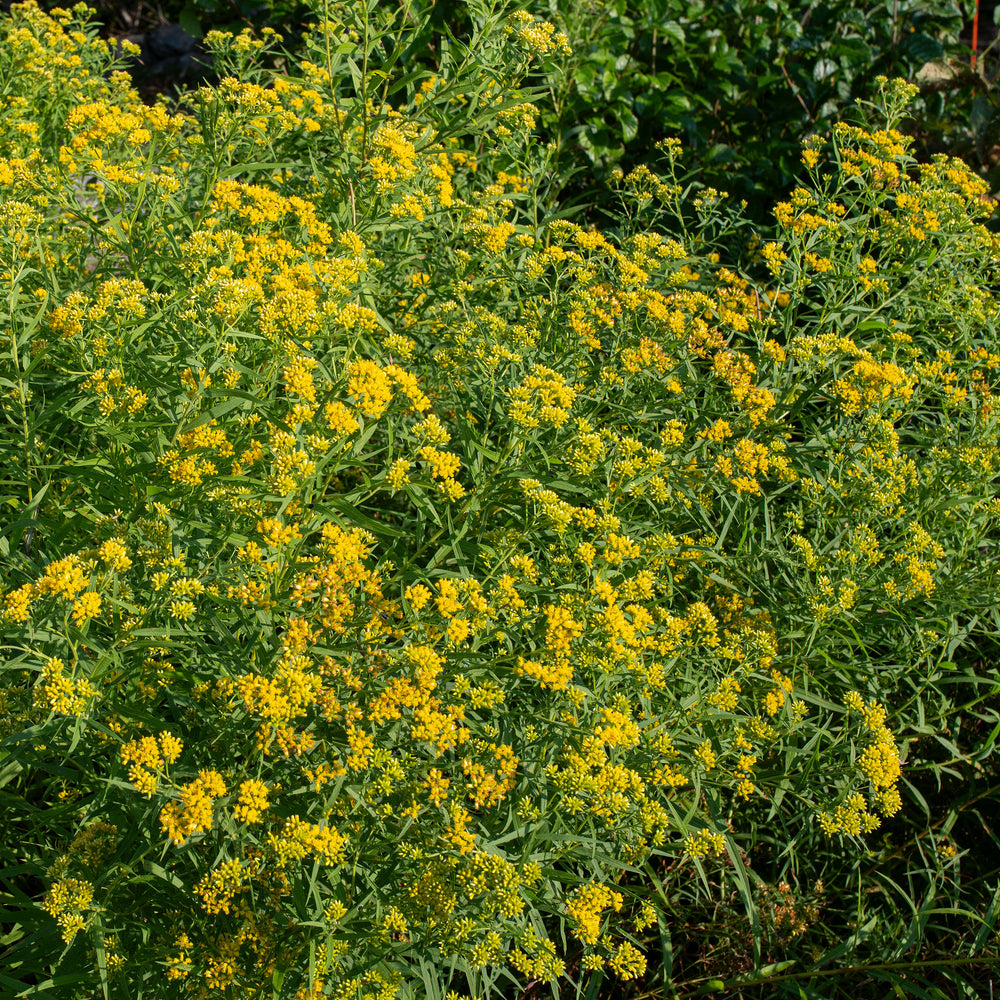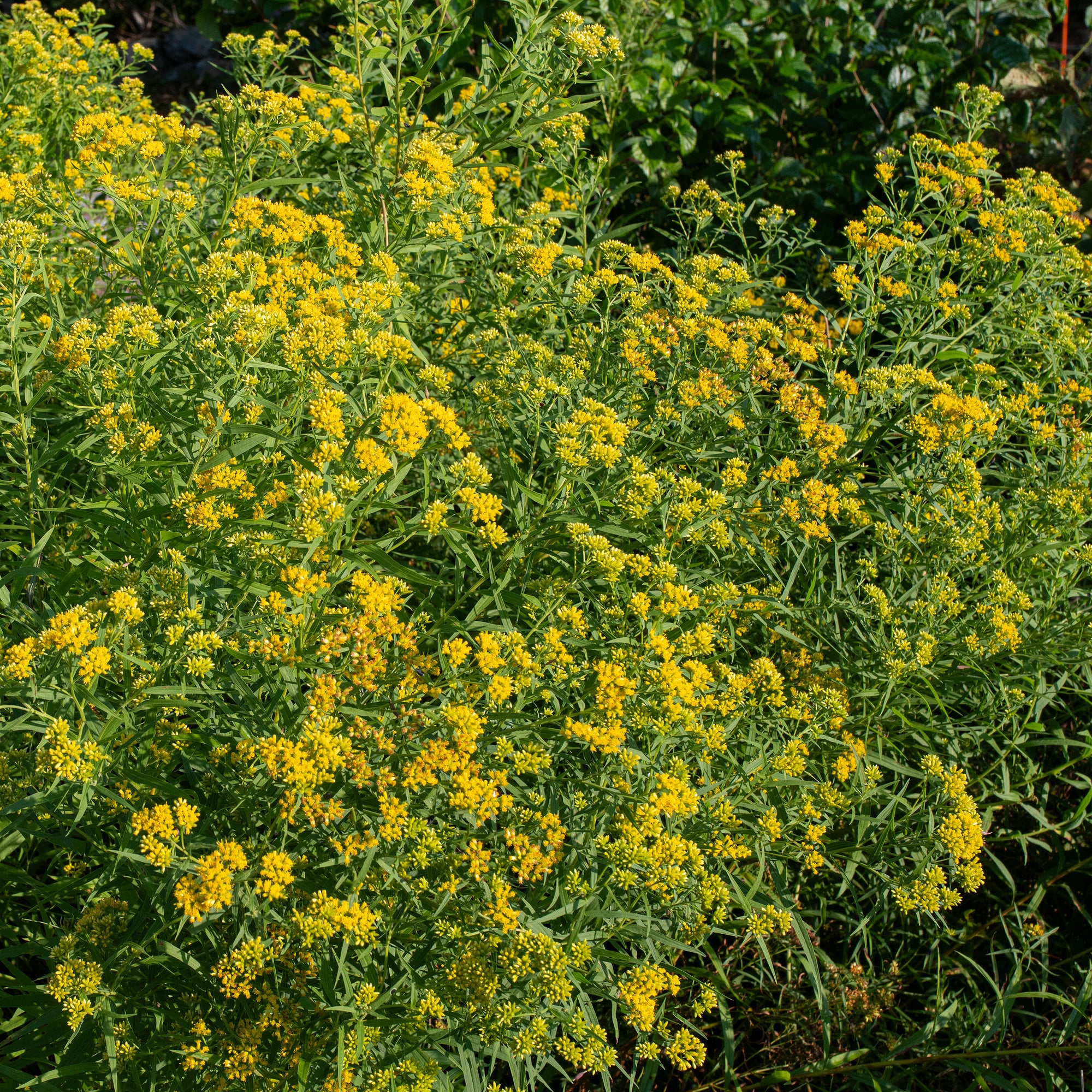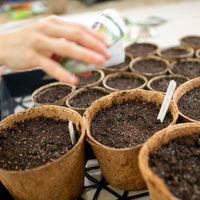Seed Packet
Grass-leaved Goldenrod
Euthamia graminifolia
Goldenrods are ideal pollinator plants, and the common goldentop is a magnet for foraging native bees and predatory insects that control many pest species. It also is a graceful billowing summer and fall bloomer with narrow elegant grass green foliage and flat-topped flower clusters in radiant yellow that cloak the tops of the slender branches.
SKU #S1897






























